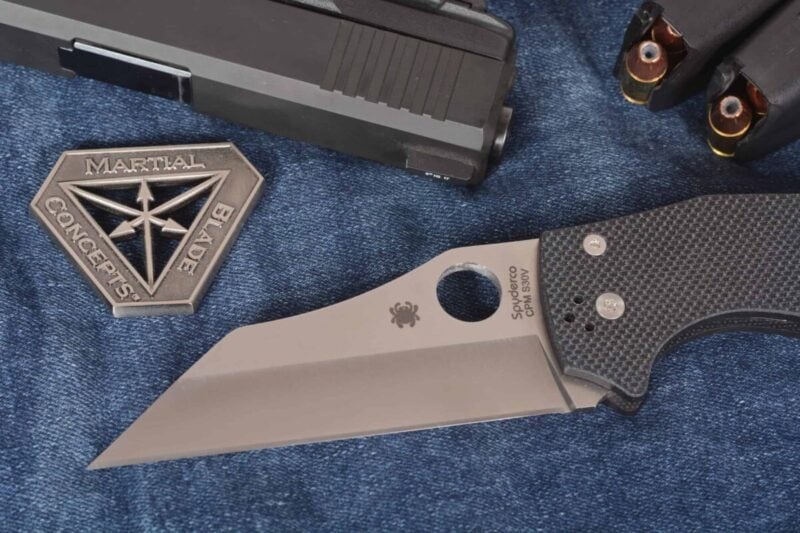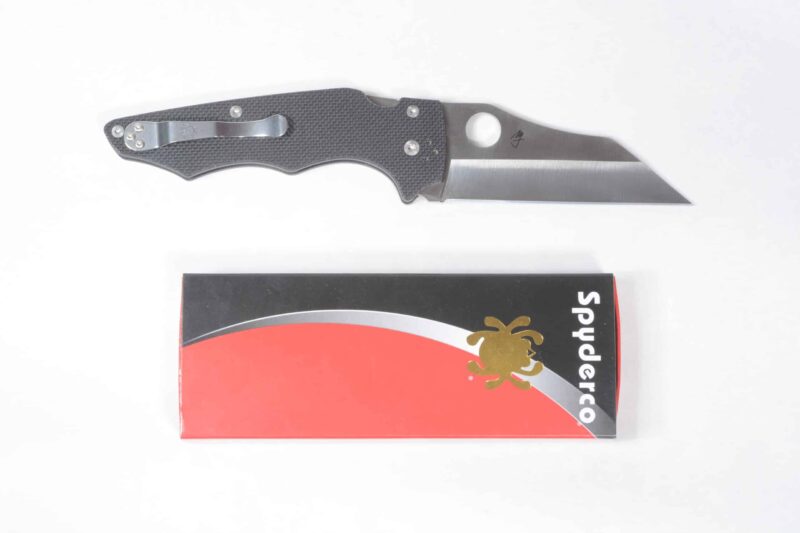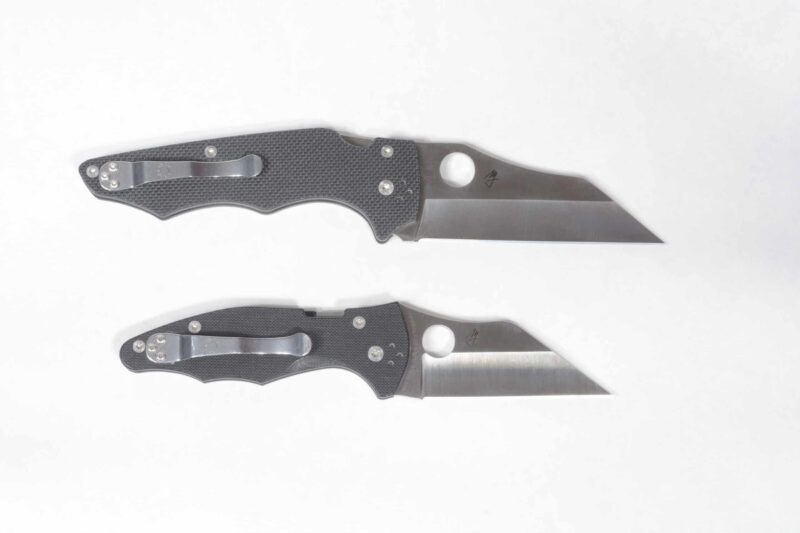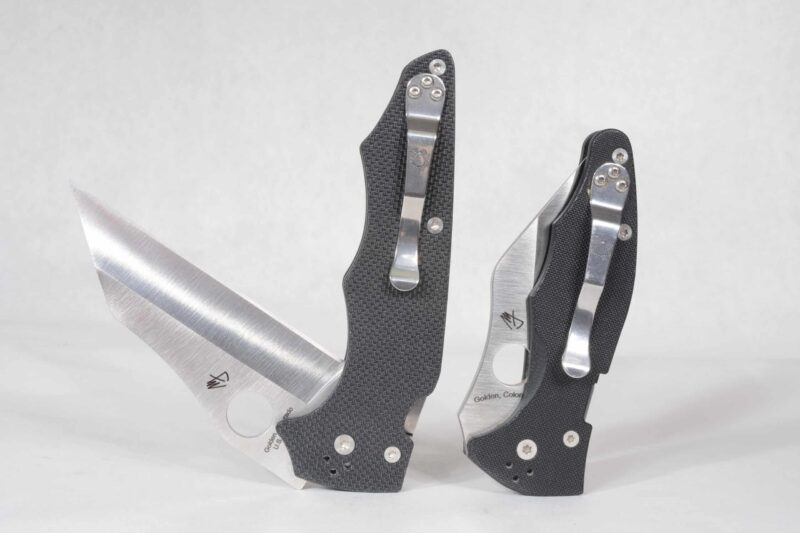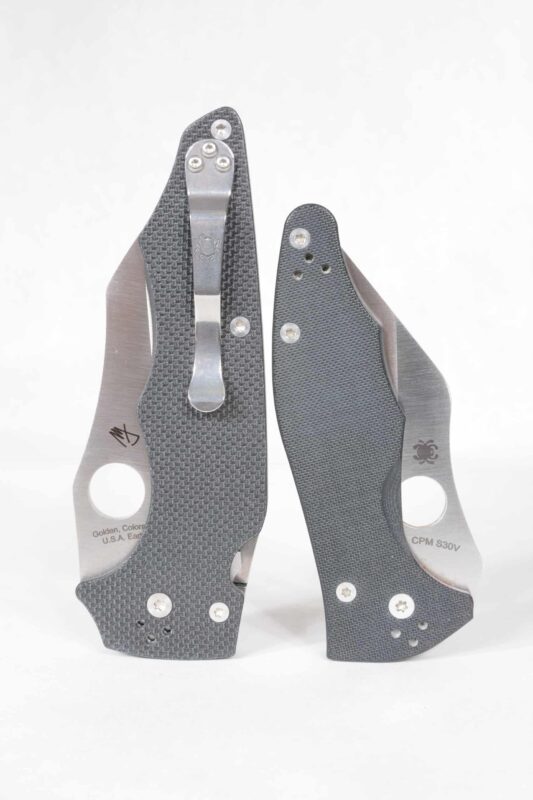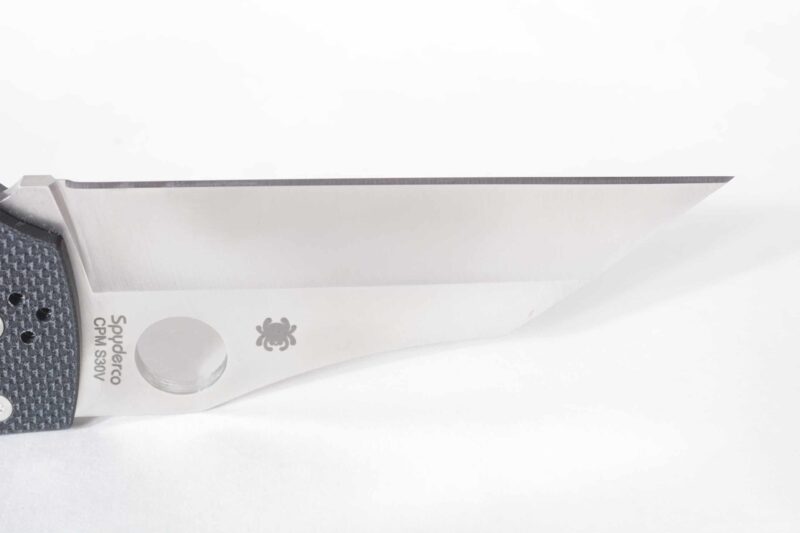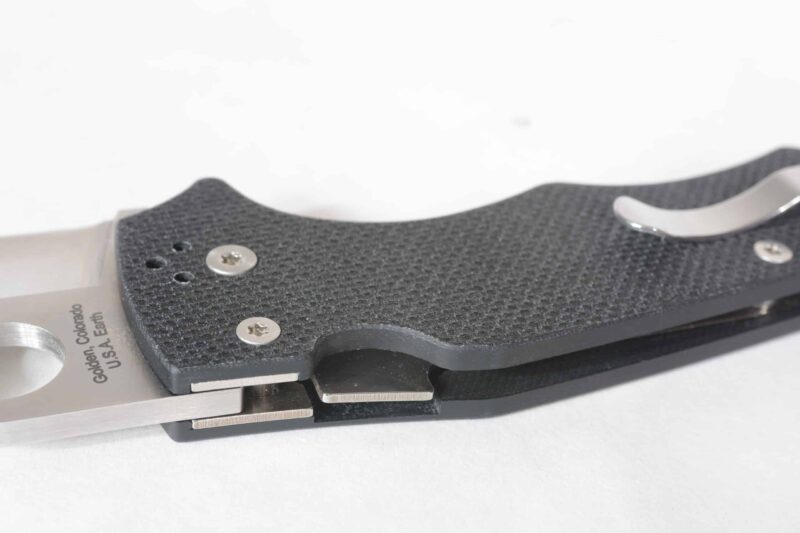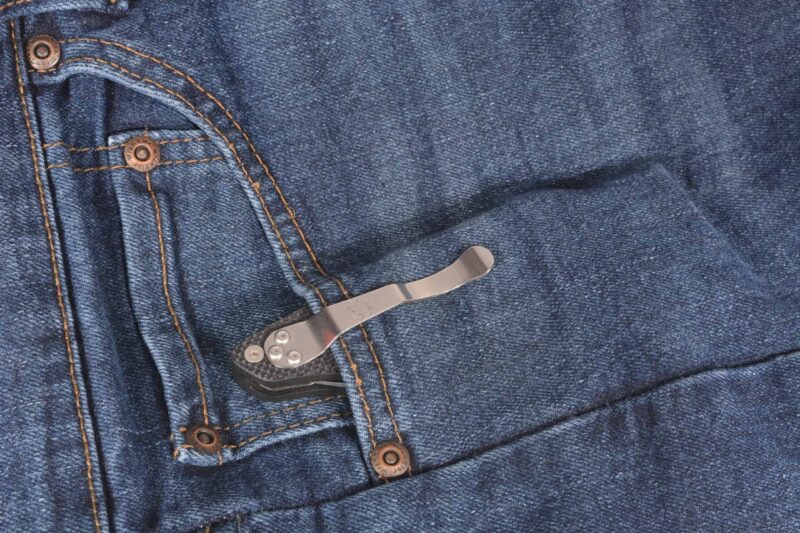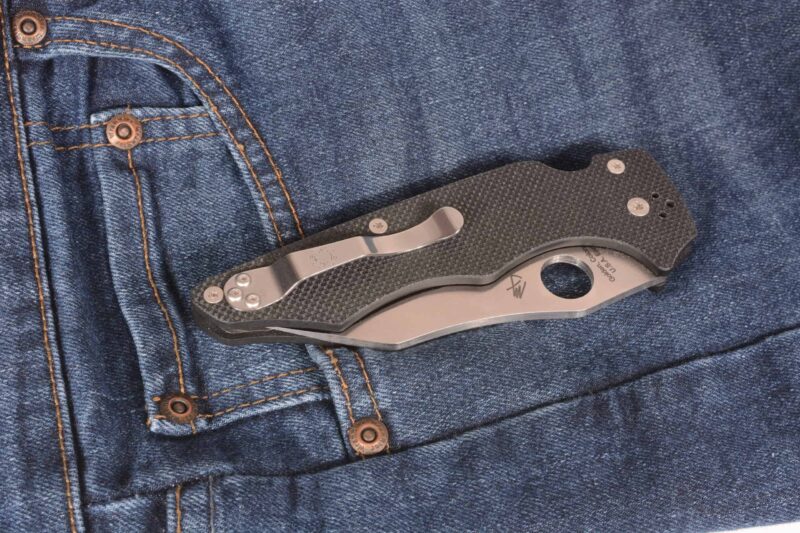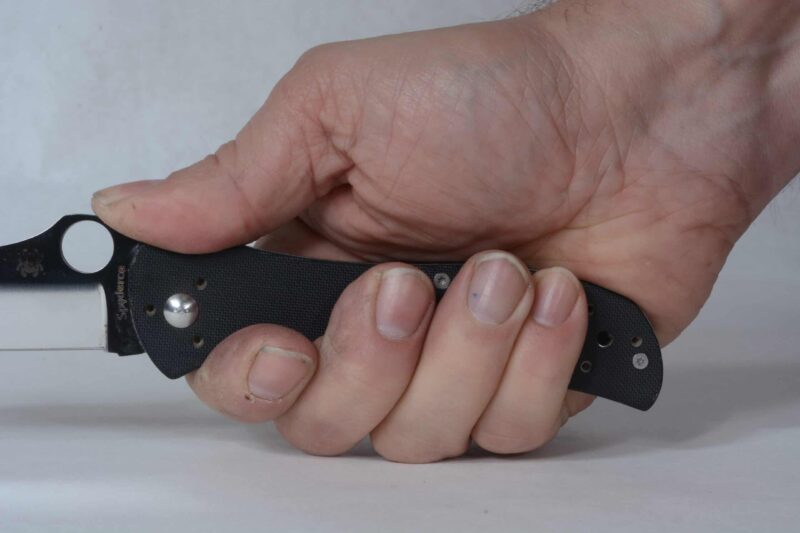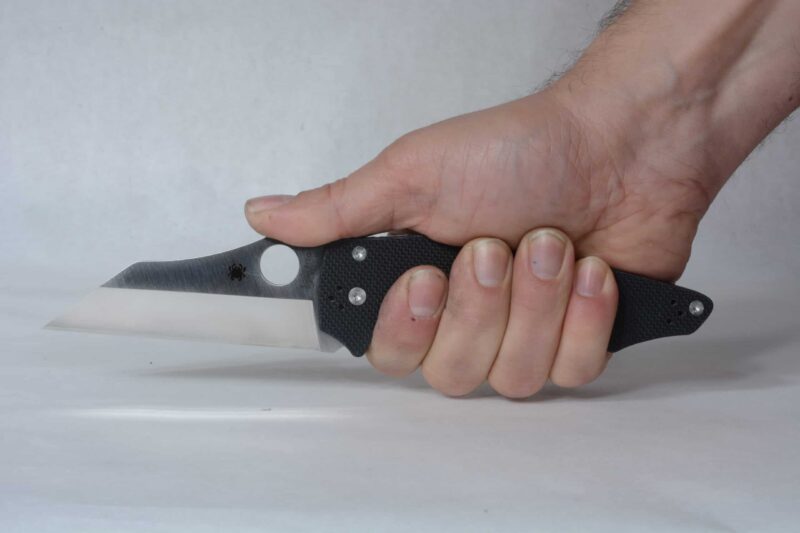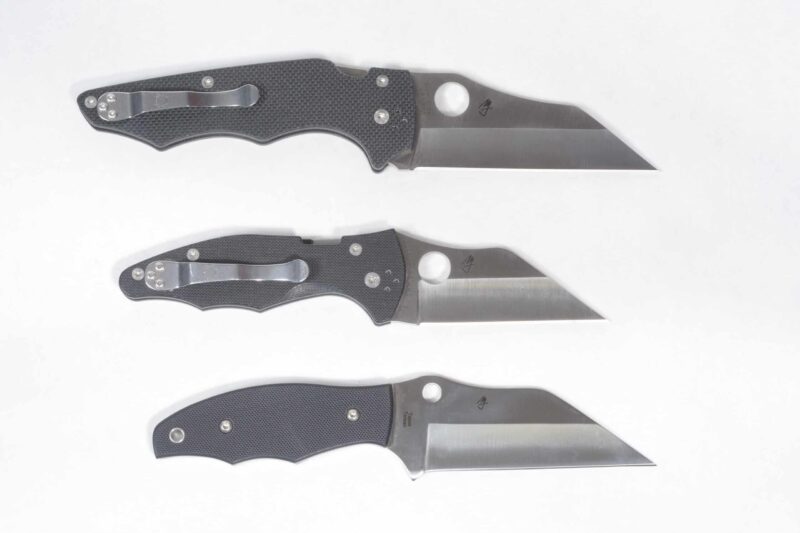Purposeful:
Spyderco’s Michael Janich-designed YoJumbo
There’s an old joke about Spyderco — which I learned from Spyderco — that the knives look like they were designed in the dark. While at first intended as a jab, it’s a nod to the truth that form ever follows function, and the way the knife feels and works in the hand is more important than aesthetics. That is not to say they lack visual appeal, but it’s not what drives the boat.
Such it is with the YoJumbo, Spyderco’s upsized version of the Wharncliffe-bladed Yojimbo 2 — you can learn a lot by looking, but you need to have it in your hand to fully grasp (pun intended) how good it is. It also helps to know a bit about its intended use and the mind from which that intention sprang.
Michael Janich is one of (if not the) premier-edged weapon instructors in America. The former co-host of the groundbreaking The Best Defense TV show on the Outdoor Channel, his background includes serving in the US Army Intelligence, with a stint at NSA, being a two-time honor graduate of the Defense Language Institute, followed by recruitment by the DIA, where he led boots-on-the-ground missions into Vietnam and Laos to attempt recovery of US prisoners of war or those missing in action. He has earned instructor’s certificates in American Self-Protection, Serrada Eskrima and Silat Concepts, and has trained extensively in Thai boxing, Wing Chun gung fu, Tae Kwon Do and military combatives, which he cites as a strong influence. Janich is also a prolific author, including co-writing the definitive modern textbook on point shooting with combatives legend Rex Applegate. With this background, it’s unsurprising that post-9/11, he was selected by the TSA as one of twelve subject matter experts to help develop a self-defense defense program for crew.
The part of his work that is best known, however, is in the field of edged weapons. There is a cultural bias in the US against self-defense with knives. Nonetheless, in much of the country, especially rural areas, virtually everyone carries a knife of some kind. Knives are still very commonly used in violent crime, and being prepared to defend yourself in a general sense means you’d better have some idea of how to stop someone with a knife. Early in his martial arts career, when Janich asked an instructor for knife defense techniques, he was advised to first learn how to use it in order to understand how to defend against it. The years he spent doing that are distilled into Janich’s MBC/CBC (Martial Blade Concepts/Counter Blade Concepts), which uses the fundamentals of Filipino and other martial arts to create an adaptable defensive system that relies more on gross motor skills than intricate technique, and which is focused solely in stopping a violent attack.
This is a sharp contrast to the many traditional knife systems that focus on delivering an extreme number of strikes and on killing an attacker, which is not the purpose of self-defense. MBC, however, is a scalable system relying on modern research about what truly stops a human attacker and is designed to be legally and morally defensible. For more detailed information on the system, take a look at www.martialbladeconcepts.com.
Janich’s research led him to the conclusion that the Wharcliffe-style blade provides the best cutting properties, a belief reflected in a series of knives he’s designed. These include the be-wharned from Blackhawk! as well as the original YoJimbo with its distinctive box-cutter aesthetic, the evolutionary Yojimbo2 and its fixed blade counterpart, the Ronin.
Contrary to popular belief, a knife blade does not have to be long to inflict serious harm, something I learned first from a medical examiner and which Janich demonstrates very capably in his seminars. Among the factors influencing the design of the original YoJimbo was a desire for a blade length that would allow the knife to be legally carried in most states, hence its relatively short 3 ¼” length.
For those in more permissive jurisdictions, though, the 20% larger YoJumbo’s dimensions offers a 4” blade featuring the same hollow ground straight cutting edge and CPM S30V blade steel as its predecessor. Thanks to the raked back plunge line of the edge grind, however, Spyderco manages to stretch nearly an inch more of cutting edge out of the added ¾”. The difference miked around .980” on the example I have. While a fine burr near the base of the blade kept it from being shaving sharp over the whole length of its cutting surface, a couple of strokes across a flat stone quickly removed it. The YoJumbo otherwise arrived with the kind of edge I expect from Spyderco.
The YoJumbo and its predecessor both have a four-position pocket clip that comes installed in the tip-up position, which Janich prefers because it requires minimal changes in the grip to open once withdrawn from the pocket. For those interested in other clip systems 5×5 Combat Solutions offers an innovative series of deep pocket and other clips for Spyderco knives.
Other features include Spyderco’s Compression Lock and textured G10 scales reinforced by steel liners. In keeping with the proportionate changes, the G10 handle itself comes with a coarser texture than the YoJimbo 2, which is more likely to keep the larger knife firmly seated in your hand. From a physics perspective, larger knives have more inertia (this is particularly important if you use any of several inertial opening techniques), and longer blades exert more leverage on the hand holding the knife, so added texture is an important part of keeping the knife firmly in your grip instead of pinwheeling through the sky.
If it is uncomfortable or too hard on your clothes, you can always use fine sandpaper to knock down the sharp points. Those who are old enough to remember when G10 pistol grips first became a thing will remember the original Rob Simonich Gunner grips, with their palm-gouging golf ball texture, came with a small sheet of sandpaper.
The YoJumbo’s added size means it tipped my postal scale around 1 ¼ ounces more than the YoJimbo 2, or about the weight of two extra rounds of 9mm. Much of that weight, of course, is in the blade. While you can use the original “handle drop” opening technique with the YoJimbo, or use the trademark Spyderco hole (which is about 11% larger than the YoJimbo 2), the YoJumbo shines with the inertial openings that are part and parcel of the MBC curriculum, but which can be much harder to master with knives that have smaller, lighter blades. One opening technique, where the forearm is rotated briskly while the handle is held on the same axis as the forearm rather than at a ninety-degree angle, is particularly challenging, but not for the YoJumbo, which snaps open decisively.
Many folders have a prominent thumb rest on the base of the blade where it joins the handle in the open position. While it looks helpful, in many cases actually using that rest will quickly disabuse you of the idea. Placing the tip of your thumb on that rest causes the meat of your palm to pull away from the back of the knife handle, creating a hollow that results in only the heel of your hand and the tip of your thumb offering any support for the knife. Not good. Janich teaches laying your thumb at length down the spine of the blade, which not only allows for more natural pointing, much like some of the shooting techniques that use an extended thumb or forefinger, but it puts the entire length of the handle in firm contact with your palm, creating a stronger grip. This grip also explains part of the blade grind: in addition to the extra length of cutting edge, part of the purposes of the modified grind was to place the start of the cutting surface directly beneath the ball of the thumb for maximum power.
The YoJumbo packs an extra inch of blade length into the same basic lines of the YoJimbo 2, while maintaining all the functionality that made it so formidable. It’s a lot like a racecar; you may be able to drive it on the street, but you’ll never see it at its best. While usable for a number of cutting tasks, the YoJumbo is a purpose-built defensive tool at its best when used in keeping with the principles of MBC.
CONTACT:

